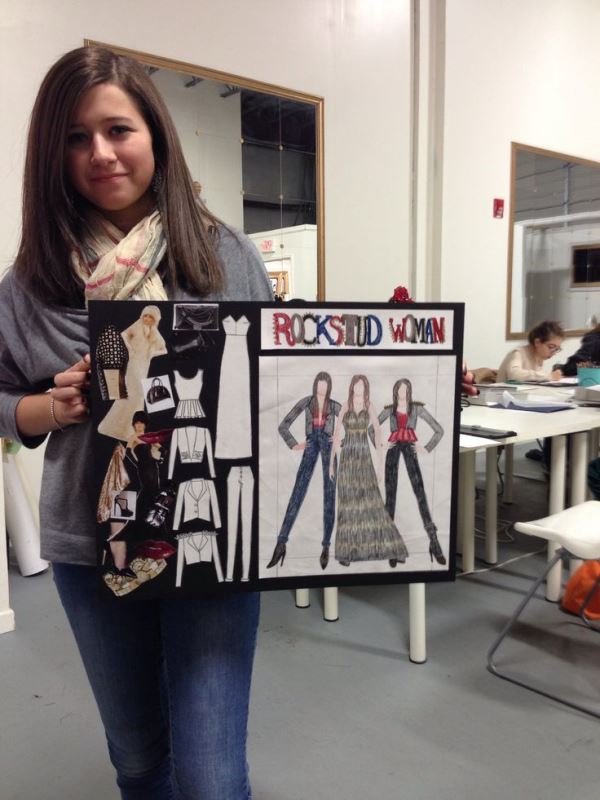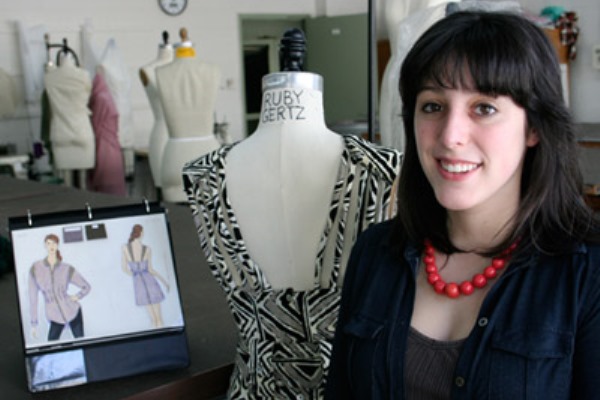The following steps shown below are a sample format how a designer works. Mostly Fashion Designing students follow these steps while studying in Fashion Institute. The following steps are common for all though the sequence of the steps may vary in a design studio, export or buying house or a designer working on a collection of garments or working for a specific client.
STEP 1 : MOOD BOARD/ THEME/CONCEPT BOARD
The mood board/theme/ concept board tells the design story. It’s an inspiration board for the Designer. Designers collect variety of photographic images or anything that sparks the Designer’s creativity and imagination is appropriate inspiration material. The collection-colour, fabrics, prints and silhouette will be inspired by the theme of the mood board.
STEP 2: COLOUR BOARD
Some Designers create a separate colours board if not a part of the mood board directly. The colours are chosen according to the season. The right colours are chosen from pantone shade cards.
STEP 3: SOURCING FABRIC SWATCHES
Selection of fabric is a very important stage. The designer selects fabric on basis of the season, and the look of the garment. Fabrics can be of different weaves, printed, woven or knitted depending on design. The swatch board is a collection of selected fabric which the Designer consults while designing.
STEP 4: CLIENT PROFILE
Creating a customer image and biography enables a Designer to think more tangibly in terms of design. The Client profile contains all detail information about the client like lifestyle, annual income, society the client belongs as well as likes and disliking.
STEP 5: DESIGN DEVELOPMENT SHEETS
The design development sheet is like a fashion sketchbook. It’s a documentation of a Designer’s thinking process showing quick drawing skills and use of colour, fabric, accessory ideas, makeup and even hair styles. Fabric exploration and surface ornamentation ( embroidery, print, etc) is also finalized.
STEP 6: RANGE
Best designs from the Design development sheet are selected to make the final range of garments. The range can have minimum six to twenty or even more garments. The range consists of garments of different types but will belong to one family in sense of use of colour, fabric or style.
STEP 7: DRAPING OR PATTENMAKING
Designers either chose draping or pattern making to construct the garment before stitching. DRAPING The fabric is draped on the dress form (size similar to the client’s body size). Mostly gowns or cowls are made using draping technique. PATTERN MAKING Pattern making is a process where basic pattern of the client’s sizes is made first. Later the patterns of garments are made from the basic patterns.
STEP 8: MUSLIN FIT OR TOILE FIT
After draping or pattern making, the garment is stitched on muslin or grey fabric to test the fit. Usually Designers work on highly expensive fabric. So before making the final garment a muslin or toil test fit is must.
STEP 9: FLATS AND SPECIFICATION SHEETS
The ability to render technical sketches accurately is important skill any Designer should acquire. The Flats contains technical details of how the garment should be stitched. The flats include all details of types of stitches, and use of trimmings etc.
STEP 10: FINAL GARMENT
The final garment is the now ready to be delivered to the client or ready to be showcased in a fashion show. The final garment is a finished garment made from expensive fabric, proper seams, and surface ornamentation depending on the design.
STEP 11: FASHION SHOW/ EXHIBITON/ DELIVERED TO CLIENT
A Fashion Designer usually showcases their upcoming line or collection in an exhibition or fashion show where the models walk dresses in their original clothing creation.If the garment is designed for specific client, the garment is delivered to the client.
Check this related video below on how designers work:


